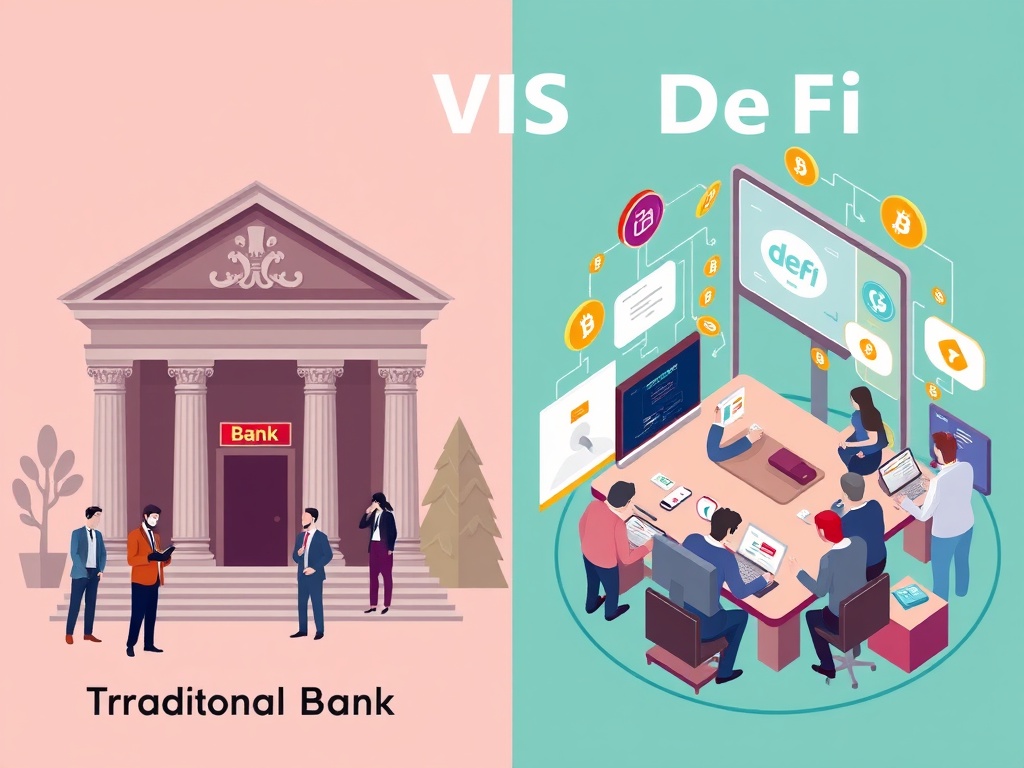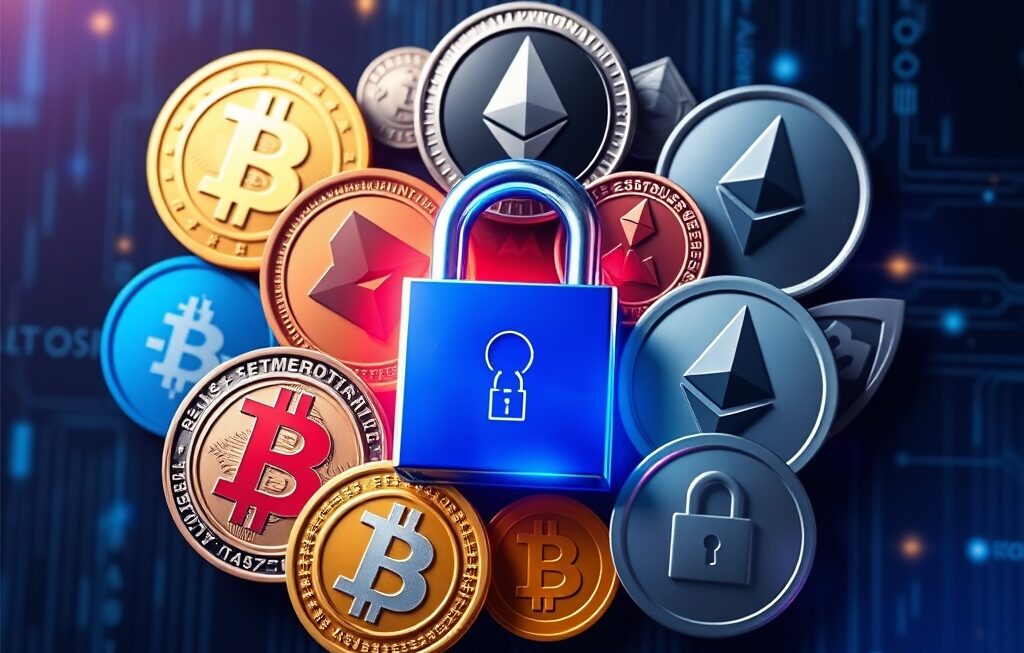Over the past few years, the financial world has witnessed one of its most dramatic transformations ever: the rise of Decentralized Finance (DeFi). Built on blockchain technology, DeFi is changing how people interact with money, lending, and investments. Rather than relying on traditional banks and centralized financial institutions, DeFi enables individuals to manage assets, trade, and borrow directly through decentralized networks.
This shift is not only reshaping the global financial system but also redefining trust, accessibility, and transparency in ways that traditional finance could never achieve. In this article, we will explore in depth how DeFi is transforming traditional finance, why it matters, and what the future may hold for this revolutionary ecosystem.
Understanding DeFi: A Revolution in Financial Systems
Before diving deeper into how DeFi is transforming traditional finance, it is essential to understand what DeFi really means. At its core, Decentralized Finance (DeFi) refers to financial systems built on blockchain networks — mainly Ethereum, but also others like Solana, Avalanche, and Cardano.
Unlike traditional banking systems that depend on intermediaries such as banks, DeFi applications operate through smart contracts — self-executing pieces of code that automatically manage transactions when conditions are met. This structure eliminates middlemen, reduces costs, and increases accessibility for users worldwide.
DeFi platforms cover a wide range of financial services including:
- Lending and borrowing
- Yield farming and staking
- Decentralized exchanges (DEXs)
- Insurance and derivatives
- Stablecoins and synthetic assets
These innovations collectively form a decentralized financial ecosystem that operates 24/7, across borders, and without centralized control.
The Core Differences Between DeFi and Traditional Finance
The key difference between DeFi and traditional finance lies in control and transparency. Traditional financial institutions act as gatekeepers — holding custody of assets, controlling transaction flows, and often charging high fees. In contrast, DeFi empowers users to manage their own assets directly through digital wallets, giving them complete ownership and control.
Accessibility and Inclusion
Traditional banking systems often exclude millions of people worldwide due to geographic, regulatory, or economic barriers. DeFi, however, operates globally and requires only an internet connection and a digital wallet. This inclusivity allows anyone — regardless of nationality or credit history — to participate in the global financial economy.
Transparency and Trust
All transactions in DeFi are recorded on public blockchains, making the entire system transparent and auditable. Unlike traditional banks that operate behind closed systems, DeFi enables users to verify transactions and protocols in real time, creating a new level of trust and accountability.
Cost Efficiency
By removing intermediaries and automating processes through smart contracts, DeFi significantly reduces operational costs. Users save on transaction fees, and institutions that adopt DeFi technologies can streamline operations and improve profit margins.
How DeFi is Transforming Traditional Finance
Now that we have established what DeFi is, let’s examine exactly how DeFi is transforming traditional finance across various sectors.
1. Decentralized Lending and Borrowing
One of the most impactful areas of transformation is lending and borrowing. Platforms like Aave, Compound, and MakerDAO allow users to lend or borrow crypto assets without needing a bank. These systems use collateralized smart contracts, ensuring security and transparency.
In traditional banking, loan approvals depend on credit scores and bureaucratic procedures. In DeFi, loans are executed instantly through smart contracts, offering faster access to liquidity while maintaining security.
2. Yield Farming and Passive Income
DeFi introduces new ways to earn passive income, such as yield farming, staking, and liquidity mining. These opportunities allow users to earn returns on their crypto holdings by contributing liquidity to decentralized exchanges or staking tokens to support network operations.
This innovation challenges the traditional concept of savings accounts, which typically offer low interest rates and limited flexibility.
3. Tokenization of Assets
DeFi enables the tokenization of real-world assets, including real estate, commodities, and even art. This process transforms physical or traditional assets into digital tokens that can be traded easily across borders. Tokenization increases liquidity, accessibility, and investment diversity — advantages that traditional financial systems struggle to provide.
4. Cross-Border Payments and Remittances
International money transfers through banks can be slow and expensive due to multiple intermediaries and exchange fees. DeFi-based payment systems enable instant cross-border transfers with minimal costs. Platforms like Ripple, Stellar, and Polygon are revolutionizing how global remittances are handled.
5. Decentralized Exchanges (DEXs)
Decentralized exchanges such as Uniswap, SushiSwap, and Balancer eliminate the need for centralized trading platforms. They allow users to swap tokens directly from their wallets, reducing counterparty risk and increasing security.
These DEXs have become a major threat to traditional stock and forex exchanges, offering greater autonomy and global participation.
Challenges and Risks of DeFi
While DeFi is transforming traditional finance, it also faces significant challenges. Smart contract vulnerabilities, regulatory uncertainty, and scalability issues remain major concerns.
Security risks are particularly pressing — several DeFi platforms have suffered from hacks and exploits, resulting in millions of dollars in losses. Additionally, the lack of clear regulation means that investors may have limited legal protection in case of disputes.
Governments and financial regulators are beginning to respond by exploring frameworks that balance innovation with consumer protection. The European Union’s MiCA regulation and the U.S. SEC’s ongoing policy discussions highlight growing global interest in managing DeFi responsibly.
The Role of Regulation in DeFi’s Future
As DeFi expands, regulation will play a crucial role in shaping its evolution. While overregulation could stifle innovation, smart and adaptive regulatory frameworks could help legitimize DeFi and promote safer adoption.
Collaborations between regulators, developers, and financial institutions are key to ensuring that DeFi integrates smoothly into the global financial landscape.
The Future of Traditional Finance in a DeFi World
It is becoming increasingly evident that traditional financial institutions cannot ignore DeFi. Many banks and investment firms are exploring blockchain integration to enhance efficiency and transparency.
Rather than seeing DeFi as a threat, the smartest institutions view it as an opportunity for collaboration. Hybrid models combining traditional finance with decentralized infrastructure could become the norm in the coming years.

In summary
The future of finance is undeniably decentralized. As DeFi continues to grow, it challenges traditional banking models and empowers individuals to take control of their financial destiny.
From lending and payments to asset management and investments, DeFi represents a paradigm shift that is transforming how we think about money. While risks remain, the potential for innovation and global inclusion makes DeFi one of the most important revolutions in financial history.
Em resumo, a forma como o DeFi está transformando as finanças tradicionais não é apenas uma tendência — é o início de uma nova era de liberdade financeira, transparência e empoderamento.



